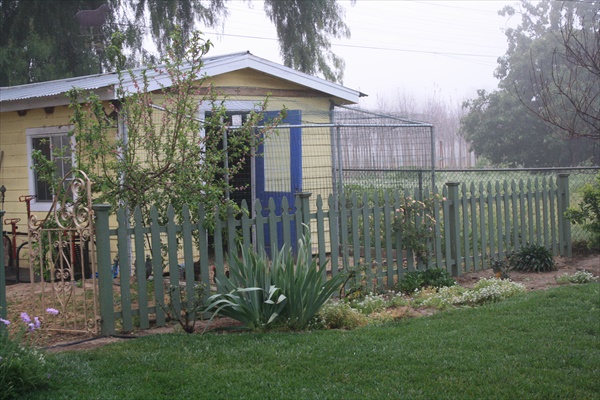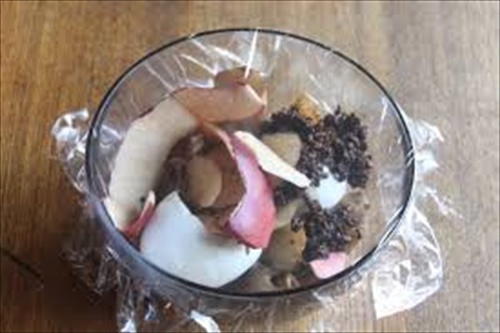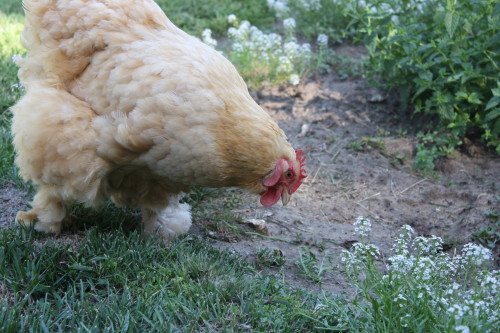Archive for August, 2016
12 Ways to Begin Homesteading in Suburbia
It’s a lazy summer day laying on my vintage patio daybed.
I close my eyes, drifting away as a warm breeze envelops me. My mind meanders to gently rolling hills with green grass swaying in the breeze, pastures dotted with grazing sheep, new spring lambs sprinting from mama to mama, a dairy cow lying quietly chewing her cud, and a steer growing fat waiting to fill a family’s freezer. I see chickens clucking and scratching around the barnyard and bees buzzing in the garden.
BUT,…
…and there’s always a but, isn’t there?
When I open my eyes instead of rolling pastures and a white picket fence I see a house on a small lot at the edge of town. Not exactly the picturesque farm I see in my mind’s eye.
That suburban reality is the reality for most of America.
But, (again with the but)
A suburban dwelling doesn’t mean you have to give up your homesteading dreams. It only means you have to readjust your thinking about what homesteading is.
Modern homesteading means different things to different people. One person might be interested in old-time remedies to keep their family healthy, while another embraces baking bread or growing herbs on an apartment balcony, and yet another combs yard sales and antique auctions for vintage watering cans or Mason jars to adorn a kitchen or patio.
Today’s homesteader can be whatever they want to be, they are not bound by the realms of farms, small towns or rural life.
Different strokes for different folks, right?
We do have a few similarities with our more rural cousins, though. We crave returning to our roots, to old time skills and a slower way of life. We want to create a more self-sufficient life for ourselves and our family. We want to be self-reliant.
If this sounds like you, you’re in luck. There is no requirement that a homesteader must live in the country or on 100-acres. You can do it right now, right where you are, even if where you are is a downtown apartment…a city lot…or a 1-acre plot.
So let’s get you started with 10 simply things you can do right now to set yourself on the path of becoming a modern day homesteader.
1. First and foremost…decide what you want as a homesteader. It may sound simplistic, but it is actually crucial and sometimes very difficult to decide what you want or why you want to homestead. Do you want it all—gardens, orchard, animals, the whole shebang? Or, do you only want pieces of a homestead life, like baking bread, canning vegetables or growing flowerbeds. The choice is yours, so take your time. There’s no right or wrong way to homestead in our modern world.
2. If you decide to “go big” then you’ll need to assess your property. What do you have room for? What don’t you have room for? What are the “must haves”, and what are the “can do with outs”? This is an important step so you don’t over extend yourself or your property. Be realistic about you and your property. While homesteading can be fun and rather addictive, it WILL be a whole lot of work. The more you have, the more work there will be and your homesteading journey won’t be so fun in the end if you overextend yourself.
I moved into my 1/3-acre home on Labor Day weekend and spent the entire winter drawing plans and laying in supplies for my “bigger picture”. By early spring were we ready to rock the barn building and garden layout.
Remember…a homestead is a constant work in progress, enjoy the journey.
3. While you’re pondering Steps 1 and 2, do some fun things.
Create a potted herb garden even if it’s on your balcony, windowsill or patio.
Begin seeking out new recipes to start cooking from scratch more often.
Try your hand at making a simple chevre cheese.
Teach yourself to bake bread, even if it’s with a bread maker.
Whip out your sewing machine and make an apron.
Here are a few ways to begin homesteading in suburbia:
4. GROW SOME OF YOUR OWN FOOD.
No matter how big your garden is you will relish a bounty of fresh veggies that will provide you with nutritious, pesticide-free meals, and save you money in the process. There are many types of gardens perfect for any suburban homestead no matter where you live. There is the traditional backyard garden with lots of raised beds or rows of produce. There’s edible landscaping where fruits and vegetables are intermixed right alongside your other plants. Then there’s potted gardens that are perfect for small spaces or apartment living. Fruit trees can be planted to take the place of shade trees giving you useful shade and using valuable water to produce food for your family.
There are few things more fulfilling than taking a bite out of a juicy, sweet, unbelievably tasty tomato that you just grew yourself. The difference in taste between those and the ones picked green and shipped from Central America or halfway across the country is absolutely astounding.
5. SET UP A RAIN BARREL AND COLLECT WATER.
Rain water is one of the few free things in this life, so why not collect it to use in the garden. Many cities have water collection programs where rain barrels are free or at a low cost. The water you save can add greatly to your household savings, especially during dry spells. Diverting grey water from the washing machine can also add to your water savings program.
6. PREPARE FOR THE UNFORESEEN.
Life is unexpected at best. We never know when the next storm will hit, knocking out power or making it impossible to get to town. The best precaution to any natural disaster is a well-stocked pantry. A closet, the basement or an extra bedroom can all be outfitted with shelves and stocked with staple items and family favorites.
Picking up a few extra items at the market will have your pantry stocked in no time. And, if a natural disaster never strikes you will have put food away at a lower price than future inflated prices.
7. CAN OR FREEZE FOR LONG TERM STORAGE.
Once you’ve had a few fresh veggies from the garden and gotten the hang of cooking from scratch chances are you won’t want to go back to store bought foods, especially if you live in an area that has long, cold winters. Preserving the harvest is the next logical step in your homestead journey. There are many ways to preserve—canning, freezing, dehydrating, salt curing, pickling, fermenting, root cellaring and more. Start with something simple, like homemade pickled beets. They are practically full proof!
8. RAISE YOUR OWN CHICKENS.
Chickens are my “go to” livestock for beginning homesteaders. A small flock of 3 to 4 laying hens is fun, easy to care for and will give you fresh eggs for the kitchen and manure for the garden. You can build a simple coop in an afternoon, or be creative and look for a large used doghouse or garden shed. Be sure to check out local ordinances so you know if you can have them and how many you are allowed.
9. START A COMPOST PILE.
A compost pile is a must have for any homestead. The rich soil you make from decomposing kitchen scrapes, grass clippings, fall leaves and manure will improve your gardens and give you a better bounty. Fall is the perfect time to start because of all those free leaves. Four wooden pallets is q quick and easy way to start making your own soil.
10. BUILD YOUR COMMUNITY.
New homesteaders may find the process of starting to homestead a bit daunting, but once you start talking to people you will quickly realize there is a whole community of like-mined people out there who are dying to help you be successful, so embrace their generosity. A great place to start talking to people is the Farmer’s Market, a local farm stand or plant nursery. While you’re making plans you can gain knowledge and build friendships that will carry you into the future.
Another great way to meet new people and get your kids involved in your homesteading journey is to enroll them in a youth program that focuses on the many areas of homesteading. 4-H and Grange are both farming centered programs that have lots to offer. Check out your county Cooperative Extension office or Grange Hall for programs near you. You will build lifelong skills and friendships while also learning about leadership.
11. SET UP A CLOTHES LINE.
This sounds so simple, I know. Sometimes it’s the simple things that really get you inspired to do more. My outdoor clothesline was the first thing I put in and the time I spend hanging clothes or taking them down is one of the most enjoyable parts of my day. It’s kind of therapeutic as well as being productive.
12. BUILD YOUR SKILLS.
No matter what kind of homestead you decide on you will need many skills to make it work. From gardening and preserving to building or cutting firewood, now is a good time to start. Learning can take place in classes offered at local Grange Halls or home improvement stores, on the internet watching YouTube videos or by spending time in the library or bookstore reading about the skill you want to learn. But, don’t forget to put your new found knowledge to work by practicing what you’ve learned. Be patient too. And remember, a homesteader is a lifelong learner willing to continue gaining skills throughout their life.
I’ve barely scratched the surface here, but this will get you started and hopefully inspire you to delve deeper into the wonderful world of homesteading.
Check out our categories for lots more information on turning your suburban lot into a productive mini-farm.
5-Color Peanut Coleslaw
Over the years I have created a “go-to” list of favorite summer side dishes. You know the kind—baked beans, potato salad, pasta salad, corn salad, pea salad—the kind of cool, refreshing and creamy dishes that go great with BBQ’s or potlucks or just eaten by themselves when the hot weather makes eating the last thing on your mind.
This recipe has it all. Crunch. Cool. Sweet. Tang. It’s our favorite slaw and goes great with steaks and burgers, or chicken and fish. Add a handful of shredded leftover chicken and make it a meal for those hot days when heating up the kitchen is anything but appealing. It’s that good!
5-Color Peanut Coleslaw
INGREDIENTS:
1 pound cabbage, shredded
1 ½ cups red cabbage, shredded
3/4 cup celery, finely sliced
3/4 cup julienned carrots
3/4 cup julienned orange bell pepper
1/3 cup green onion, finely chopped
1/3 cup red wine vinegar
1 tablespoon water
1 ½ tablespoon sugar
1/2 teaspoon seasoning salt
1/4-1/2 teaspoon garlic powder
1/3 cup vegetable oil
1 cup roasted unsalted peanuts
DIRECTIONS:
1. In a large mixing bowl, combine coleslaw, red cabbage, celery, carrots and green onions. (Using a mandolin makes shredding quick and easy)
2. In a pint size Mason jar, combine wine vinegar, water, sugar, seasoned salt, garlic powder and oil. Shake gently to incorporate.
3. Mix dressing with coleslaw; stir in peanuts and toss well.
4. Refrigerate until ready to serve.
NOTE: This is one of those great recipes that can be added to to create a variety of styles. Add edamame, almonds and wontons for an Asian flare; or roasted corn, jalapenos and tortilla strips for a slightly Latin flavor; or add chopped kale, broccoli and peas for big veggie packed meal.
INGREDIENTS:
- 1 pound cabbage, shredded
- 1 ½ cups red cabbage, shredded
- 3/4 cup celery, finely sliced
- 3/4 cup julienned carrots
- 3/4 cup julienned orange bell pepper
- 1/3 cup green onion, finely chopped
- 1/3 cup red wine vinegar
- 1 tablespoon water
- 1 ½ tablespoon sugar
- 1/2 teaspoon seasoning salt
- 1/4-1/2 teaspoon garlic powder
- 1/3 cup vegetable oil
- 1 cup roasted unsalted peanuts
DIRECTIONS:
- 1. In a large mixing bowl, combine coleslaw, red cabbage, celery, carrots and green onions. (Using a mandolin makes shredding quick and easy)
- 2. In a pint size Mason jar, combine wine vinegar, water, sugar, seasoned salt, garlic powder and oil. Shake gently to incorporate.
- 3. Mix dressing with coleslaw; stir in peanuts and toss well.
- 4. Refrigerate until ready to serve.
- NOTE: This is one of those great recipes that can be added to to create a variety of styles. Add edamame, almonds and wontons for an Asian flare; or roasted corn, jalapenos and tortilla strips for a slightly Latin flavor; or add chopped kale, broccoli and peas for big veggie packed meal.






Recent comments
Aenean nonummy hendrerit mauris. Phasellus porta.